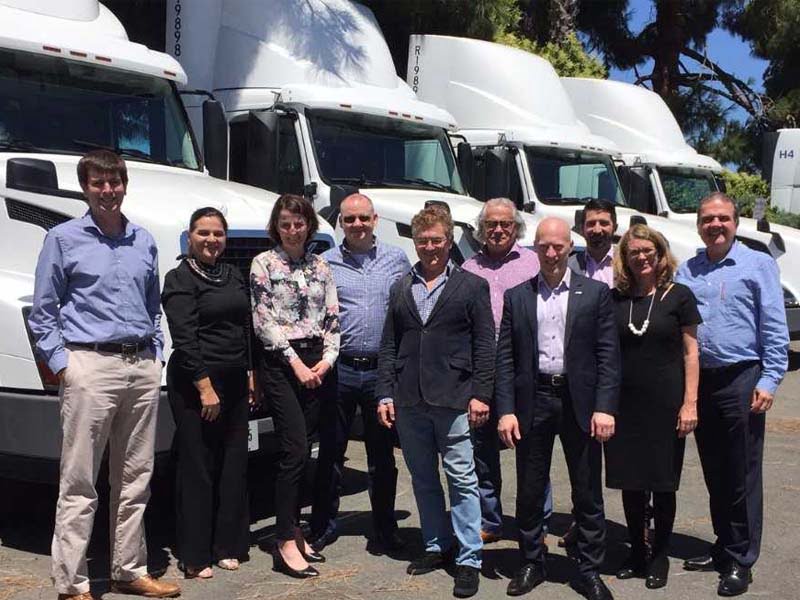Australia is actively positioning itself to lead the world in driverless car technology and provide testing ground for new innovations.
New trials of driverless technology along with accompanying legislative changes have been revealed recently, helping to build momentum behind the local sector, Australia and New Zealand Driverless Vehicle Initiative (ADVI) executive director Rita Excell said.
“It’s apparent that the work happening here in a regulatory sense, with the guidelines for trials and legislation that’s passing, that Australia is up with the leading countries now in paving the way for introducing the technology safely,” Ms Excell told InnovationAus.com.

“There’s a huge ecosystem associated with the technology that is thriving in Australia.”
State and territories have introduced legislation to allow for trials of driverless vehicles, along with running a series of trials mostly centred on shuttles.
Over the weekend, a Victorian government-led two year trial of semi-autonomous vehicles on Melbourne’s EastLink began, with new laws introduced to allow for this. The test, which will involve partial driverless technology, aims to inform the development of regulations and infrastructure for wider self-driving technology.
It follows a $1.2 million investment from the Victorian government to build its own vehicle with self-driving capabilities in partnership with Bosch, TAC and VicRoads.
“Victoria is at the forefront of automated vehicle technology – we’re investing in this trial to explore ways that this technology can be used to reduce crashes and keep people safe on our roads,” Victorian roads minister Luke Donnellan said.
In New South Wales legislation was passed last week allowing for trials of automated vehicles in the state. This would allow NSW state roads minister Melinda Pavey to approve new trials and require them to have appropriate insurance and safety plans.
“The government is positioning NSW as a leader in innovation, because we’re able to test and trial emerging technologies in our road and environment while maintaining public safety,” Ms Pavey said.
To accompany this, the state is also running a two-year trial of a semi-autonomous shuttle bus travelling between venues at Sydney Olympic Park. Other states have also run trials of driverless shuttles over the past year, and this application is likely to be the first widespread driver-free technology that we see in use.
Western Australia was the first state to do so, partnering with the RAC to run a driverless bus beginning in August last year. The Northern Territory also began its own trial of a driverless, electric bus on the Darwin Waterfront Precinct this year. Now in its second stage, the vehicle is ferrying people from restaurants and shops in the area.
South Australia has been leading the way in many regards in terms of driverless technology. The state was the first in Australia to showcase the technology, in a for-the-media trial in 2015 with Volvos featuring driverless software.
SA is also testing driverless electric shuttles at Adelaide Airport and Flinders University, and offering a $10 million Future Mobility Lab fund for technologies in the space.
Up in Queensland, the state government is planning the largest on-road testing trial seen in Australia, with Ipswich set to be the site for the tests within the next few years.
But the activity across the country isn’t resulting in typical state versus state rivalries. Governments are instead working together to create balanced legislation across the board, Ms Excell said.
“It’s been an enormous explosion of activity. With our national organisations and ministers working together we could be at the forefront of having uniform regulations for someone to come and operate right across Australia,” she said.
“With New Zealand being a partner, people are looking at the Southern Hemisphere and seeing Australia and New Zealand as very attractive locations with confidence in their regulatory requirements.”
The ADVI, a peak body for the driverless vehicles sector established two years ago with over 100 member organisations, recently took part in the Automated Vehicles Symposium in San Francisco.
The organisation showcases the recent movements in the space in Australia, and met with a series of high-profile companies with an aim to positioning the country as a possible testing ground for new technologies.
“We want to be attracting people to come and test and trial things that they haven’t already done overseas and developing them for the wider market. We have great weather conditions, great road configurations and a range of vehicle fleets, so it’s an attractive location to do the testing,” Ms Excell said.
“With the regulatory clarity, we’re putting ourselves at a competitive advantage to attract people here in the space.”
While the legislation is down to state governments, the Commonwealth also has a role. Earlier this year the Federal government invested $12 million in a two year program investigating the future of positioning technology in Australia, which has vast applications in the management of driverless cars.
“The key role of the federal government is to make sure we have a coordinated and consistent approach to how we regulate the technology in Australia,” Ms Excell said.
There’s still a long way to go until driverless cars are roaming Australian streets, but the state legislation and various trials are an important step towards this, Ms Excell said.
She expects driverless technology to be operating in “very discrete locations” in the next three to five years.
In terms of entirely autonomous technology, it might be as long as 20 years until it hits the mainstream.
“But we’ll be deriving some real benefits from that quite early on. In three to five years we’d expect some crashes that we see now eliminated, but that’s going to depend on the uptake and the role of regulators and insurers in encouraging people to move to vehicles with better safety measures,” Ms Excell said.
Do you know more? Contact James Riley via Email.

